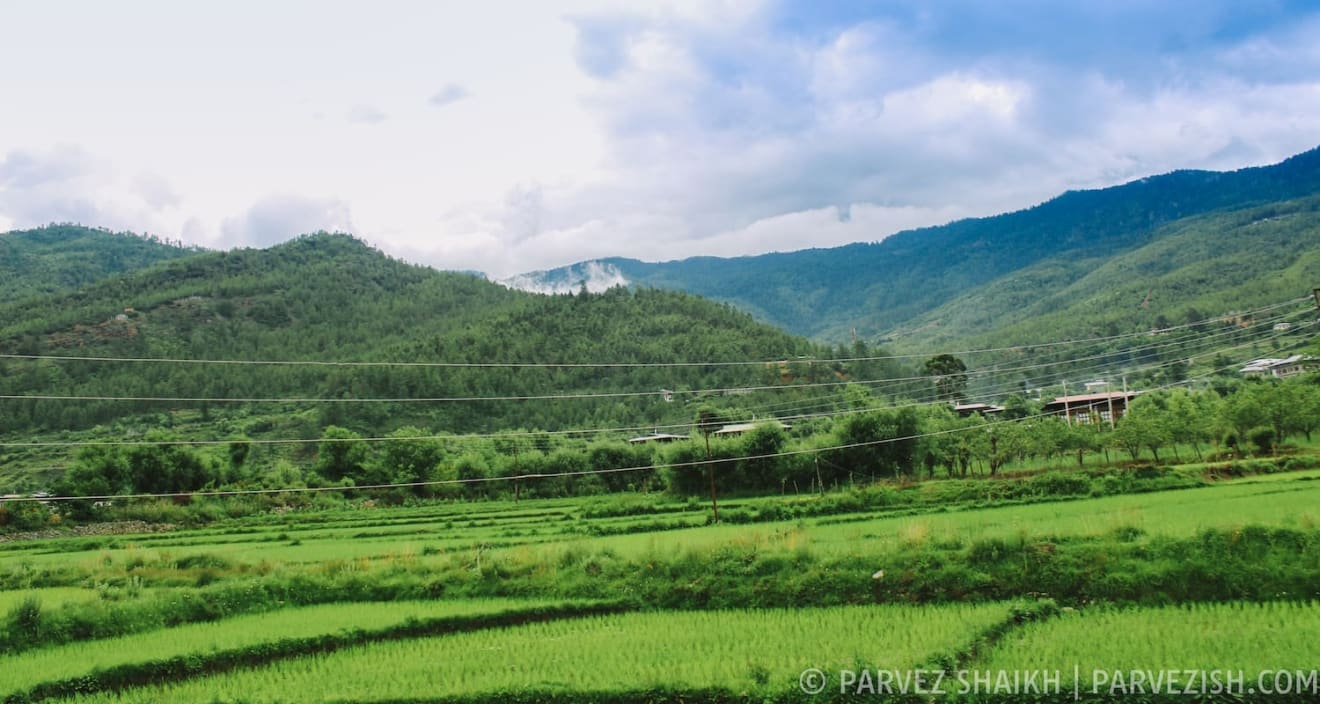Thanks to the generous help of Sonam – a shop owner in Paro town – and her husband Lhap – a tour operator – I was able to find a farmhouse to stay in Paro. I had not booked my accommodation in advance and I was glad to have found a beautiful place to stay at.
Its location, my lovely hosts, the delicious food they served me, and the house itself – everything about my three-night stay at Tshering Farmhouse was perfect. In this article, I will share my experience at this farmhouse.
The House and Its Location
Tshering Farmhouse is located a little more than 2 km from the Paro town. To reach this house, you can hire a taxi and be there in 10 minutes or take a walk and reach there in about 20 – 25 minutes. If you try to find Tshering Farmhouse on the map with its name, though, you might not be able to do so. It is listed on Google maps as simply ‘Homestay – 100 years old.’
The house is a few steps away from the Wang Chu (river) and you have to cross a wooden bridge to reach there. The first thing I noticed as soon as I reached the house was the beauty that was spread all over the place. I could see mountains covered by clouds at a distance. I almost felt I was wearing green shades as greenery was to be seen almost everywhere.

The house – built with wood in the traditional Bhutanese way – had a completely different feeling about it. This house, as I was told later, was more than 100 years old and the same family had lived there for generations. Tshering Farmhouse is well-known among local tour operators who bring their guests for a tour of the house.
I was allocated the last room. I had to climb a steep stair and enter through a huge wooden door. After climbing another stair, I would go through three rooms – one of them being the prayer area – to reach my room.
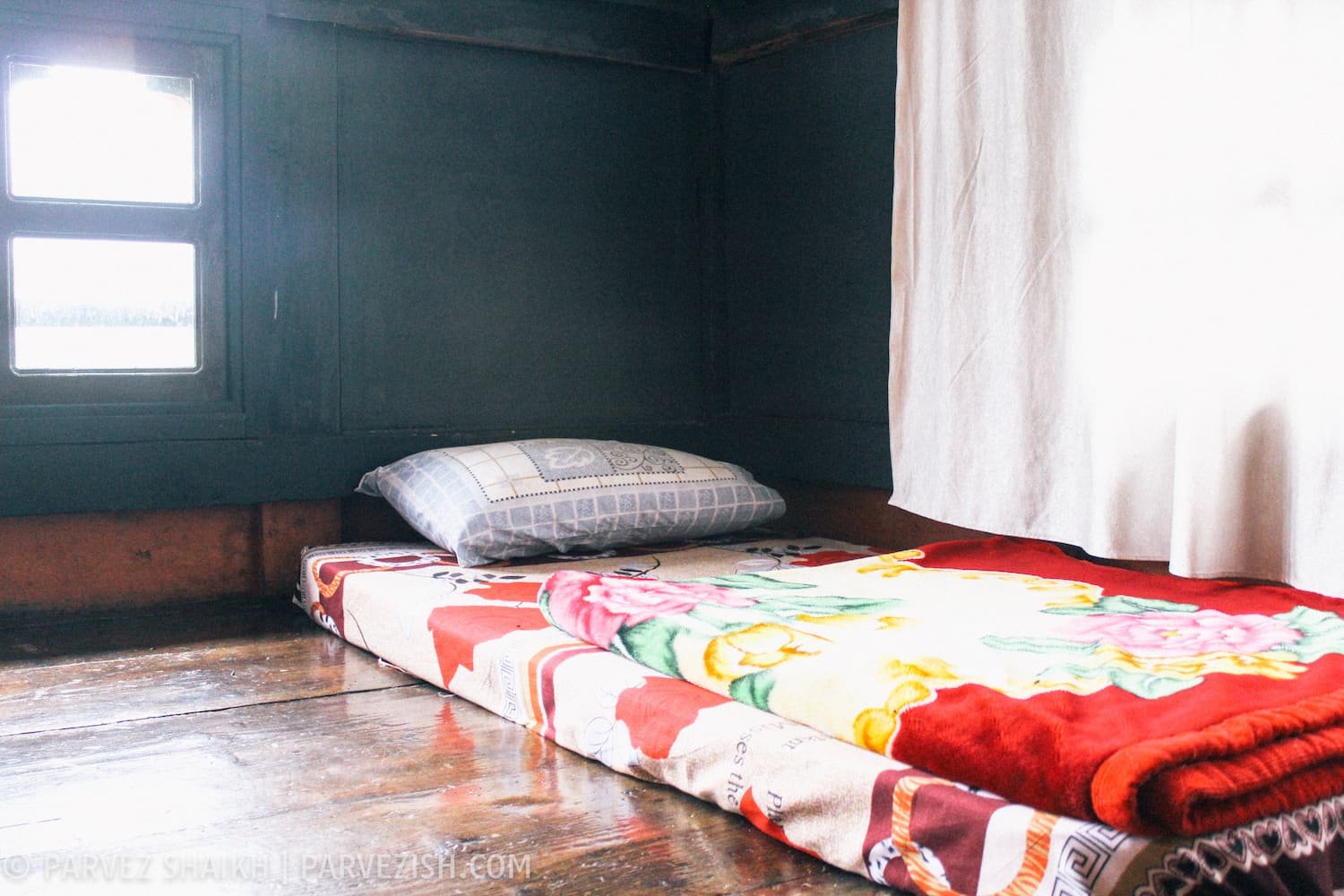
The house and the guest rooms were best examples of simplicity. The guest rooms had no beds. There were mattresses on the floor instead. Each room had huge windows providing a way to observe the beautiful place anytime.
There was no fan or AC in any room. I assume that they are not required thanks to the climate of Paro where the temperature does not go beyond 30-degree Celsius.
The Hosts
The family that hosted me comprised of the owner, his wife, their two daughters, and two sons. Two kids of the elder daughter and an elderly lady – possibly the great-grandmother of the kids lived there, too. I don’t know the names of the owners so I would refer them as Uncle and Aunty below.
Both Uncle and Aunty did not speak English. Uncle could speak a little Hindi and somewhat understand me. Aunty – who always wore a beautiful smile – did not speak English or Hindi. I tried communicating with her, anyway – usually telling her how delicious her food was.
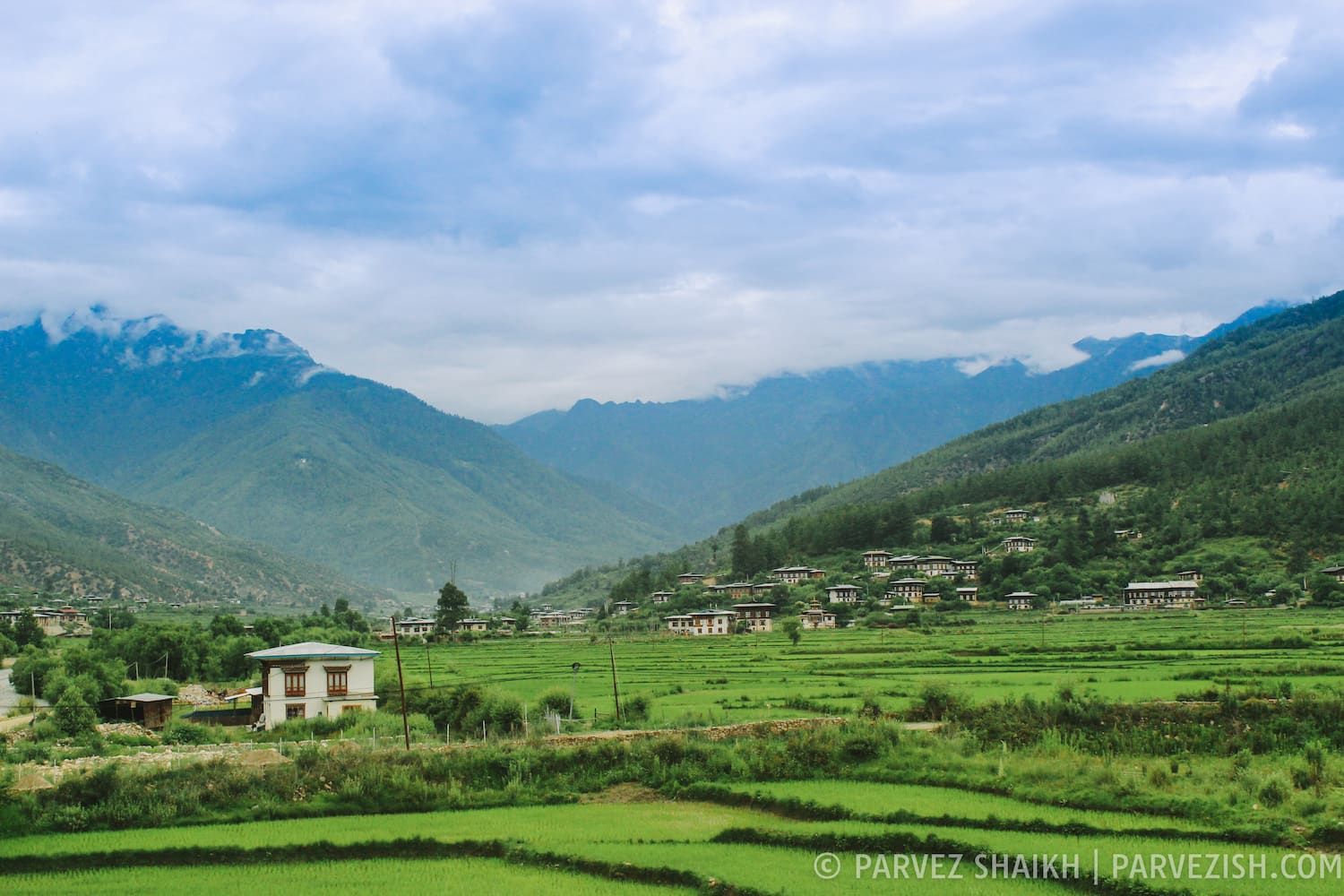
Their elder daughter Yangzom began managing the homestay business after graduating. She and her siblings spoke fluent English and helped me understand a lot about Bhutanese culture.
All family members made sure of my comfort during my stay. Uncle would wake up early and offer his prayer in the prayer room. I would wake up to the sound of his chants and go observe him every morning.
After his prayer, he would come and ask me what would I like for breakfast. Aunty would make me tea and breakfast and Uncle would serve it to me upstairs. Every night, I would sit with either Aunty, Yangzom or her sister who accompanied me during dinner.
The day before I left, I paid Aunty a visit in the kitchen. I wanted to observe their cooking and she let me in. As she cooked, I talked with her son Namgay about their cuisine, their traditions, Bhutan’s tourism policy etc.
The Food
Bhutanese food brings me joy – a lot of joy. And if you can’t handle too much spiciness, it can bring you to tears, too!
The Bhutanese cuisine is known for its spiciness. When you are served a dish for the first time, the host would probably make it less spicy to match your taste. But if you want to indulge in the real flavour of Bhutanese cuisine, you should ask them to cook the food with regular spiciness.

That’s exactly what I did. “Bhutanese food is supposed to be spicy, right?” I asked Yangzom during my first dinner. “Mom must have made it less spicy thinking you wouldn’t prefer your food spicy,” she replied. “Well, I would love to experience how the actual spicy Bhutanese food tastes like. Can you serve it to me tomorrow?” I asked.
Every meal I was served afterward was spicier. I think it wasn’t really as spicy as I thought it would be, though. I could handle the spiciness pretty well, I must say.
During my three-night stay at Tshering Farmhouse, I was served delicious, mouthwatering (literally, all that spiciness) food. Be it simple white rice served with Ema Datshi (the highly popular Cheese and Chilli dish in Bhutan) or vegetable rice served with tea as breakfast, every dish I had was better than another.
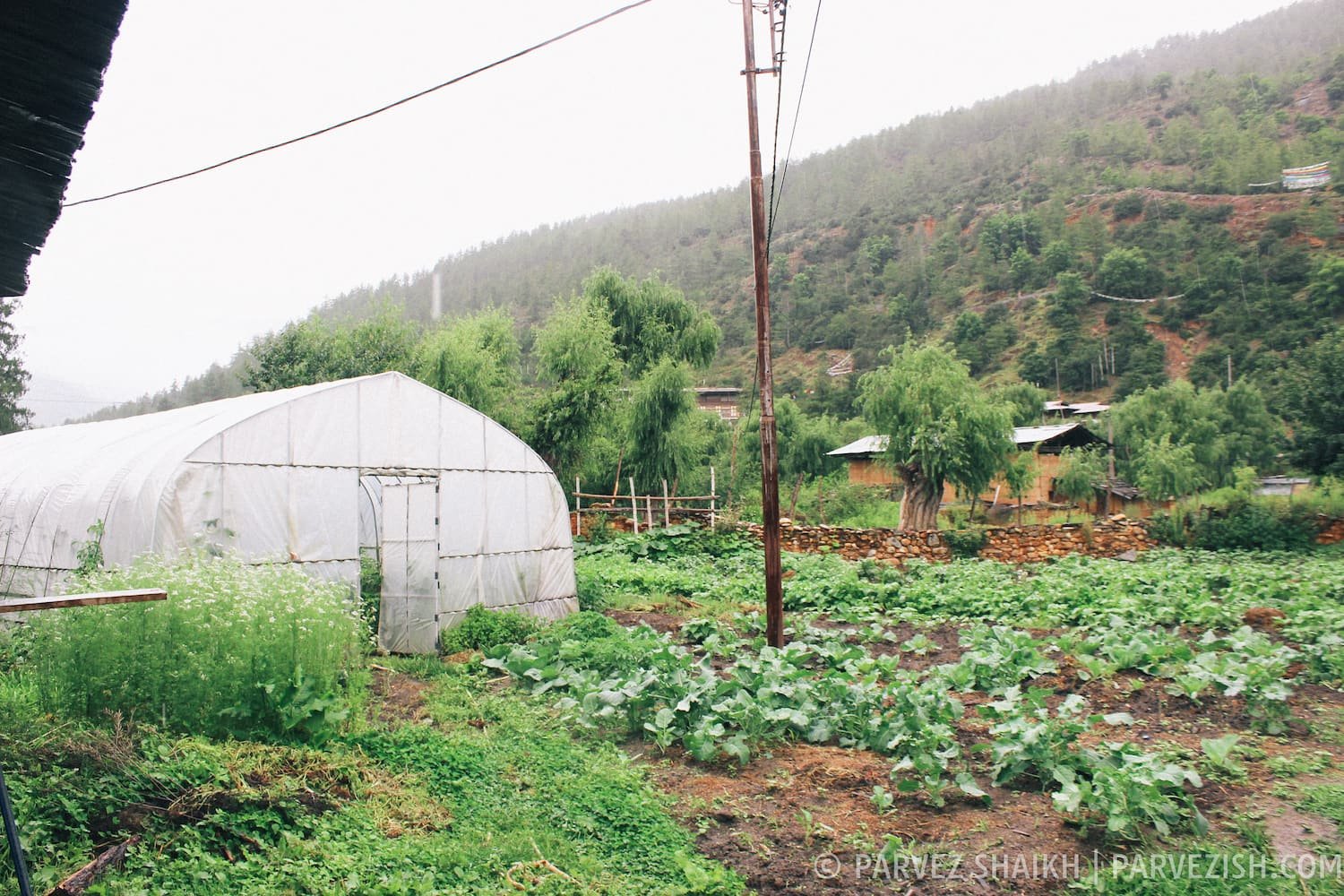
One night, I was served a dish I thought included potatoes. It was a potato dish like I never had before. I asked for more, and it was revealed to me that it wasn’t potato but radish! The dish Aunty made was so tasty, it made me forget I had never been a radish fan. Needless to say, I had more of it.
Many of the vegetables used in the food made at this farmhouse come directly from their own farm. These vegetables are fresh and organic – a difference you actually feel while enjoying your meal.
The Hot Stone Bath Experience
Hot stone bath is something you must experience while in Bhutan. It is said to have healing effects and can keep you from diseases. A hot stone bath is best experienced in rural settings instead of 5-stars. Luckily, Tshering Farmhouse offers this experience so you don’t have to go look somewhere else for it.
It was my last day in Paro when Yangzom asked me whether I would like a hot stone bath. They were preparing the bath for some guests who cancelled later. “I would love it,” I said, having no idea what on earth that meant.
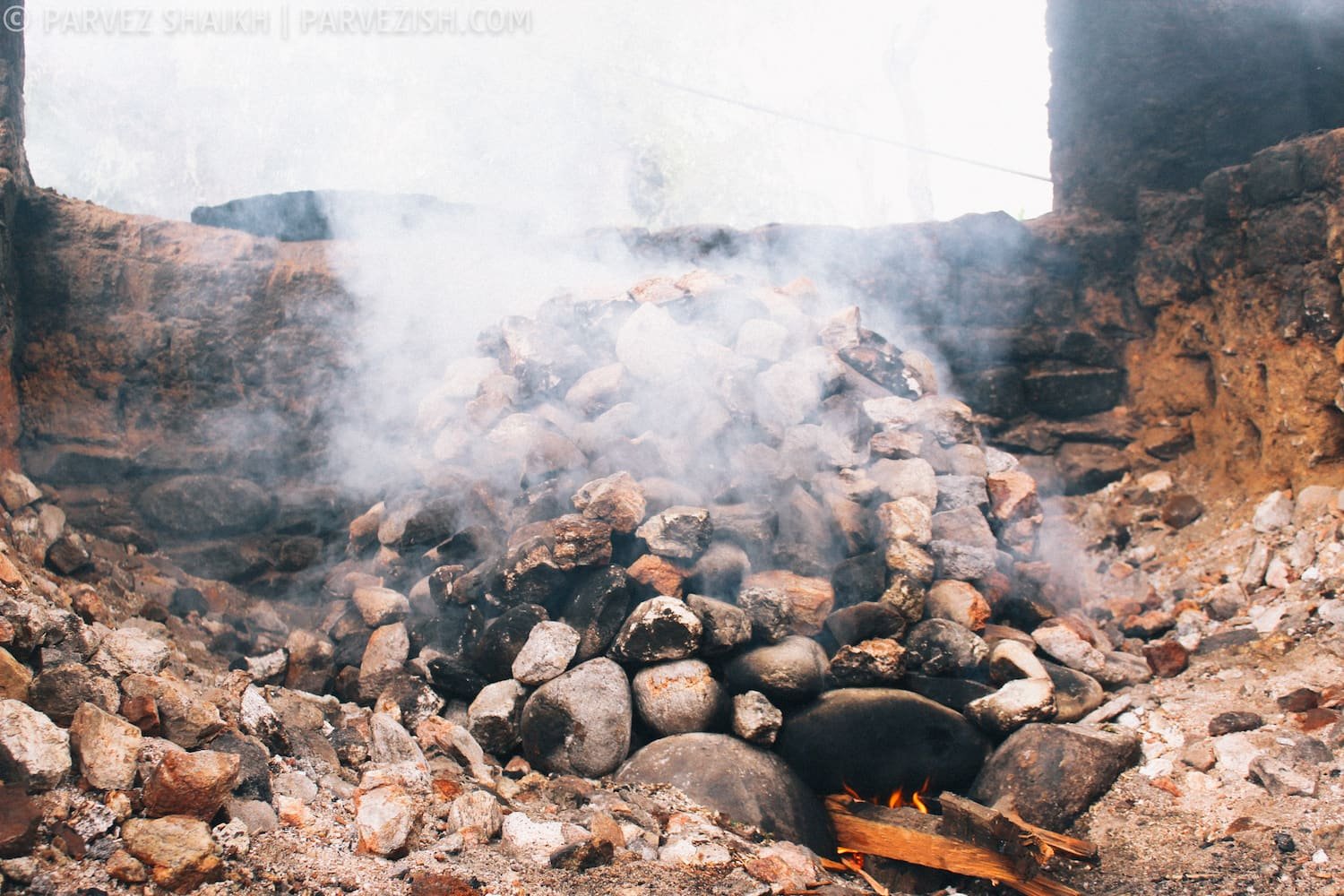
A few minutes later, I was following Yangzom to the hot stone bath area outside the house where stones were put on fire. Those stones were so hot after some time, they had turned red.
One man filled a wooden tub with water while another man put those stones in the tub one by one. By the time the stone area of the tub was filled, the water had become boiling hot.
“Just soak your self in. Relax,” Yangzom told me. “Okay, here I go,” I said with excitement as I entered the room and closed the door.
I almost screamed as I put my finger in the tub to check how hot the water really was. As it turned out within a moment, it was unbearably hot! “How do people soak themselves in such hot water?” I was asking myself, blowing air on my finger.
After waiting for a while, I once again checked the water which had turned a little less hot by now. I undressed and slowly sunk my self into the water.
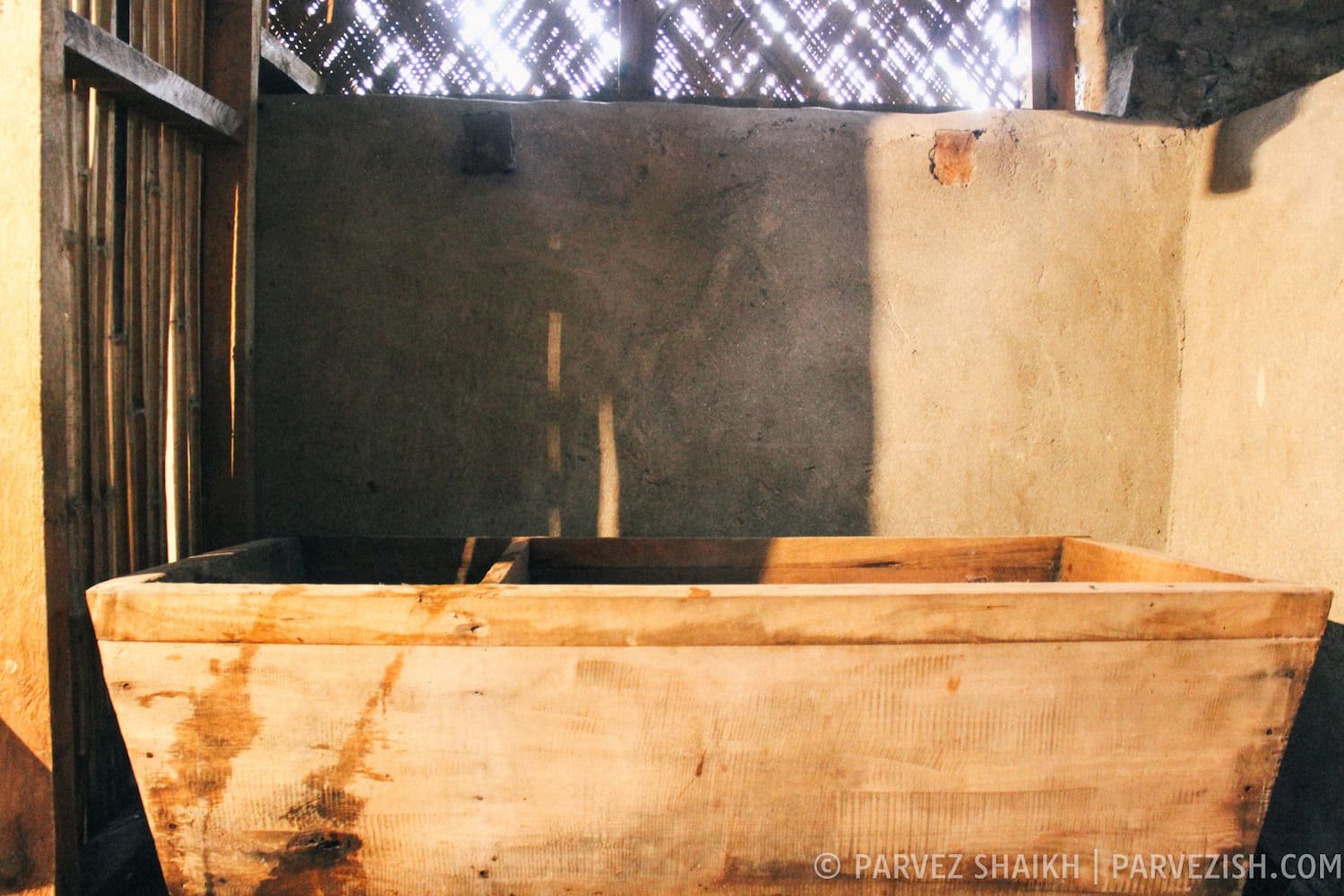
Oh, it felt so heavenly. I felt my body discharging all my tiredness into the water. My mind felt so relaxed, I don’t remember having a single thought for a while. I was just feeling the water flowing over my body – leading me to a soothing experience.
Hot stone bath is said to have many benefits. It can relieve you from joint pains and keep you from illness. Many tourists – even though they don’t stay at this homestay – visit Tshering Farmhouse just to experience a hot stone bath.
When I finished my bath, I felt so fresh as if the tub was filled with energy, not boiling hot water. I am not sure if the hot stone bath ‘healed’ me, but it surely ‘thrilled’ me.
“How do people bare such hot water?” I asked a man as I got out of the room. “Many can’t,” he replied. “Some people just get out of the tub in less than 10 minutes.”
“I survived more than that, huh!” I told myself, virtually patting my shoulder.
Three Nights At A 100-year-old Farmhouse in Paro: Summary
The next morning – my last morning at Tshering Farmhouse – Uncle served me a bowl of rice and a cup of tea. Before leaving, I met him and Aunty and thanked them for a memorable stay at their place. “I shall come back soon,” I told them and left the place.
As I walked towards the Paro bus station to board a bus to Thimphu, I was thinking how I had spent last three days at such a beautiful location and how the family had played wonderful hosts to me. I was already missing my cosy mattress and the warm blanket.
The location, the house, the family, and their food, I don’t know what was the best thing about my three-night stay at this 100+ years old farmhouse. It must be the combination of everything, I guess.
I had found this hidden gem thanks to my intuition that led me to a shop in Paro town. Sonam and her husband Lhap had helped me find this homestay, leading me to an experience I am sure wouldn’t have been possible in a hotel.
What about you? Where did you stay in Paro? Have you stayed at a farmhouse in Paro or somewhere else in Bhutan? Have you tried the hot stone bath? Share your experiences with me.
Update: Many readers have been asking for the phone number of Tshering Farmhouse. It can be reached at — 00 975 77770055. Ask for Yangzom. (Tell them you found out about their place here!)
